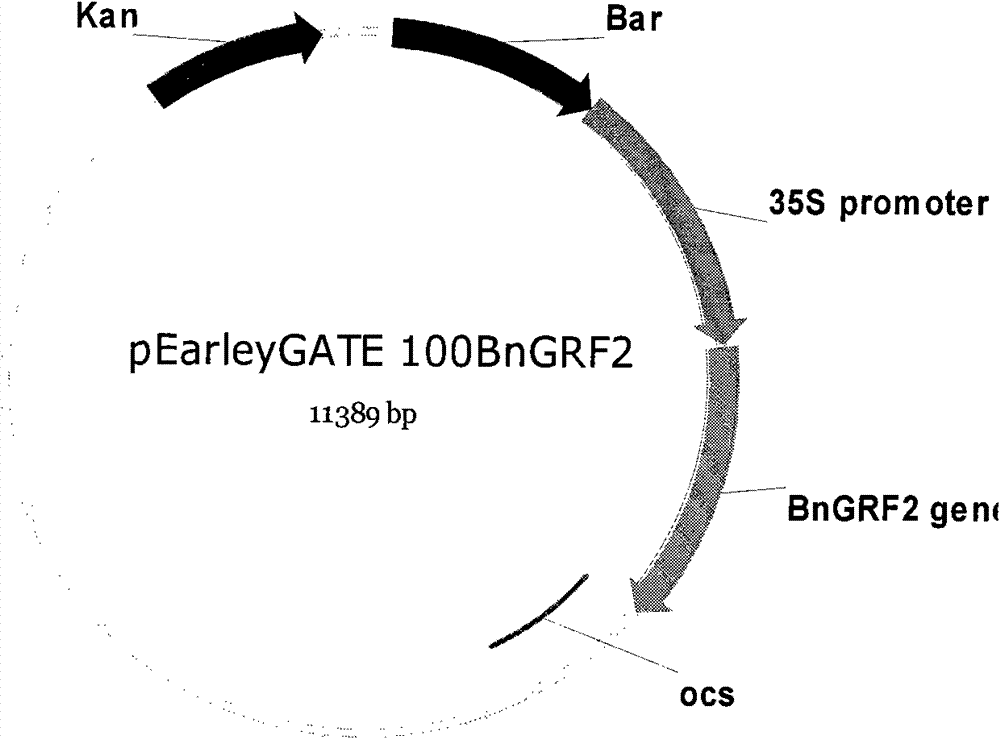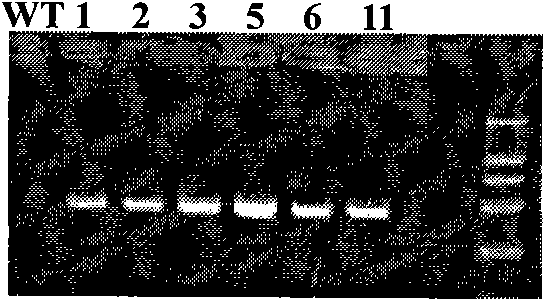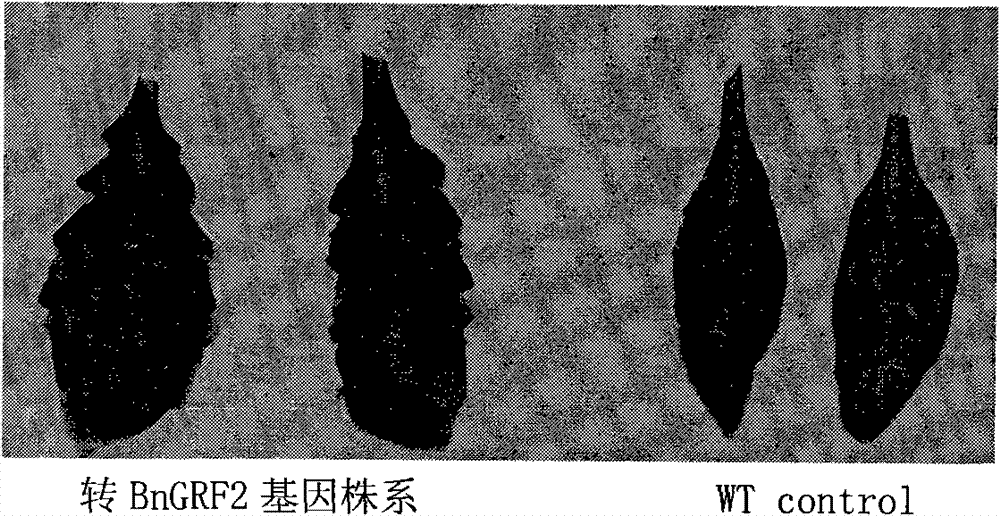Brassica napobrassica growth regulatory factor gene GRF2 and application thereof
A technology of growth regulation and genetics, applied in the fields of application, genetic engineering, plant genetic improvement, etc., can solve the problems of unknown mechanism of action, increase the complexity of regulating oil content, etc., and achieve the goal of increasing thousand-grain weight, oil content, and oil production Effect
- Summary
- Abstract
- Description
- Claims
- Application Information
AI Technical Summary
Problems solved by technology
Method used
Image
Examples
Embodiment 1
[0035] Embodiment 1: BnGRF2, AraGRF2cDNA coding region sequence
[0036] Search the published Arabidopsis gene sequence in NCBI database, BLAST to rapeseed EST sequence and compare the applicant's sequenced rapeseed genome sequence, and design primers on both sides of the gene coding sequence (BnGRF2F: forward primer: [5'- atggatcttgggtcggtaactgg-3'], reverse primer: [5'-TCAGGTTGTGTAATGAAAGTA-3'] is used to amplify the corresponding sequence from the rape leaf cDNA. The amplification primers in Arabidopsis are: AraGRF2 forward primer: [5' -atggatattggtgttcatgttc-3'], reverse primer: [5'-TCAGGTTGTGTAATGAAAGTAAT-3'], amplified directly in Arabidopsis leaf cDNA.
[0037] 1. Extract rapeseed and Arabidopsis mRNA.
[0038] For RNA extraction (TRIZOL™ Kit for RNA extraction), 100 mg of material was ground with liquid nitrogen.
[0039] A. Add 1ml TRIZOL and place it at room temperature (20-25°C, the same below) for 5min.
[0040] B. Add 200ul chloroform, shake vigorously for 30s,...
Embodiment 2
[0047] Embodiment 2: Construction of transgene expression vector and transformation of Arabidopsis:
[0048] After the gene sequence amplified by PCR was connected to the TOPO entry vector (invitrogen company), it was transformed into a competent cell DH5α (invitrogen company), and spectinase screening was carried out, and the carrier primer (T7 primer) and gene primer (gene upstream primer) Amplify and identify forward inserting clones. The plasmid was recombined with Pearleygate100 (Invitrogen Company) after a small amount of preparation, and transformed into competent cells DH5α, screened with kanamycin, and the inserted fragment was subjected to vector primers (35S promoter sequence primers) ) and gene primers (gene downstream primers) for PCR identification, the schematic diagram is shown in figure 1 .
[0049] Arabidopsis transformation process:
[0050] Reagent preparation:
[0051] Infiltration medium (1L): 1 / 2xMurashige-Skoog; 5% (mass ratio) sucrose; 0.5 g of MES...
Embodiment 3
[0058] Example 3: Screening and verification of transgenic Arabidopsis:
[0059] Screening of transformants:
[0060] The vernalized Arabidopsis seeds were planted in artificial soil watered with supersaturated PNS nutrient solution, and covered with plastic wrap. After two days, the light was exposed, and the film was removed after three days.
[0061] Conditions of artificial culture room: relative humidity 80%, constant temperature 20-24°C, light intensity 80-200umol / M2 / S, light cycle 8h dark, 16h light culture. About a week, spray herbicide (glufosinate) to screen positive plants.
[0062] PCR identification:
[0063] (1) Extraction of transformed plant total DNA for PCR:
[0064] A. 70% (volume ratio) ethanol scrub blade, weigh about 100mg
[0065] B. Add 600ul of extraction buffer (0.2M Tris-Cl, 0.25NaCl, 25mM EDTA, 0.5% (mass ratio) SDS, pH 7.5), and grind rapidly at room temperature.
[0066] C. Vortex in a 1.5ml Ependorff tube for 5-10s.
[0067] D.12000rpm, 25mi...
PUM
 Login to View More
Login to View More Abstract
Description
Claims
Application Information
 Login to View More
Login to View More - R&D
- Intellectual Property
- Life Sciences
- Materials
- Tech Scout
- Unparalleled Data Quality
- Higher Quality Content
- 60% Fewer Hallucinations
Browse by: Latest US Patents, China's latest patents, Technical Efficacy Thesaurus, Application Domain, Technology Topic, Popular Technical Reports.
© 2025 PatSnap. All rights reserved.Legal|Privacy policy|Modern Slavery Act Transparency Statement|Sitemap|About US| Contact US: help@patsnap.com



